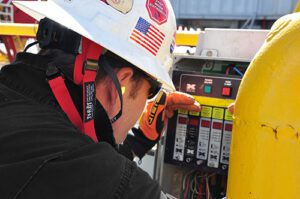Hazardous conditions can contain gasses that are not detected by smell or sight. Properly calibrated air monitors are critical tools for your protection.
- Calibration: an instrument’s measuring accuracy relative to a known concentration of test gas.
- Calibration gas gives air monitors a reference point for monitor readings in the actual work environment.
- Calibrate an instrument in the same environmental conditions it will monitor in order to ensure accurate readings.
Calibration vs. Bump Test – there is a difference. Make sure you understand which is needed for your monitor.
- A calibration check is performed by exposing the monitor to a certified concentration of gas for a particular time to verify that it provides an accurate reading.
- Bump test is a brief exposure of the monitor to gas in order to verify that the sensors respond and the instrument alarms function accordingly. Bump tests do not check the accuracy of the instrument.
Sensors degrade over time. Calibration allows an air monitor to self-correct its accuracy of gas sensitivity.
- An inaccurate sensor must be replaced immediately.
- A dropped or damaged instrument must be recalibrated as soon as possible.
Discussion Starters
- What are some gasses that may not be detectable by smell or sight?
- Have you ever been in a situation where you would have been in harm’s way had your air monitor not been calibrated?









